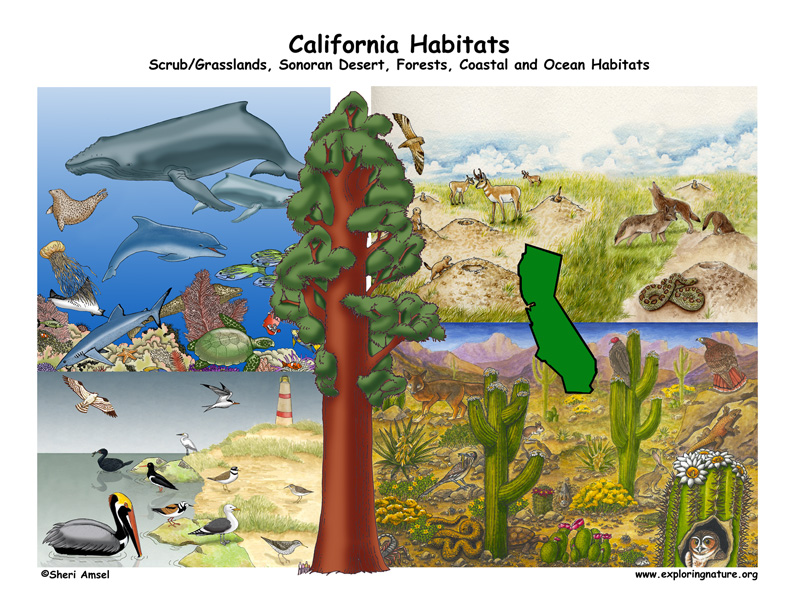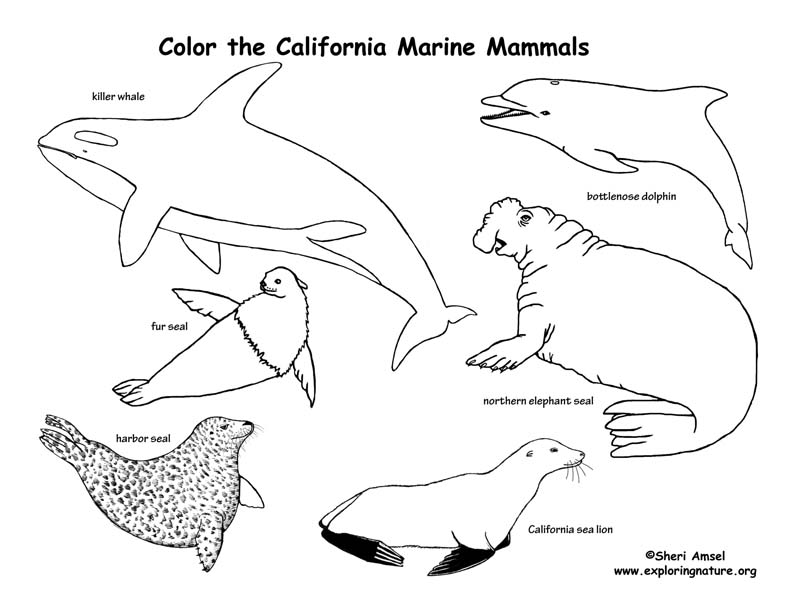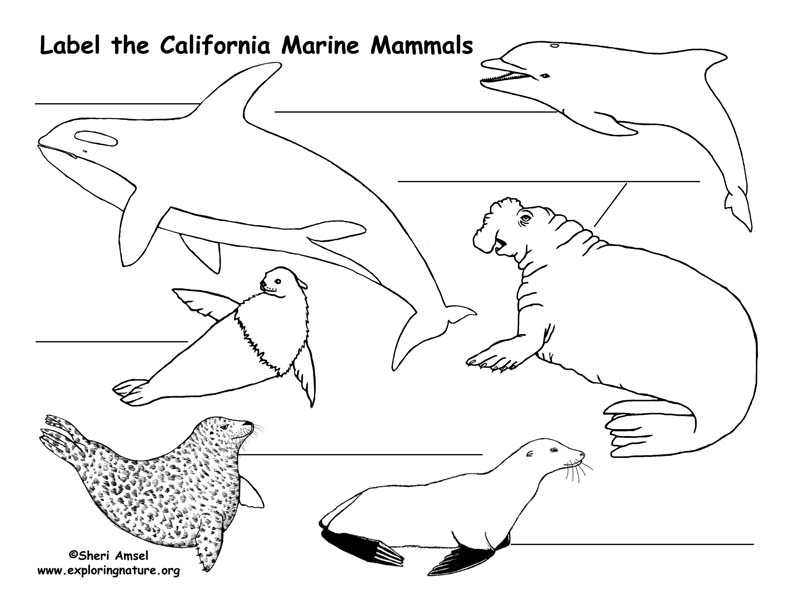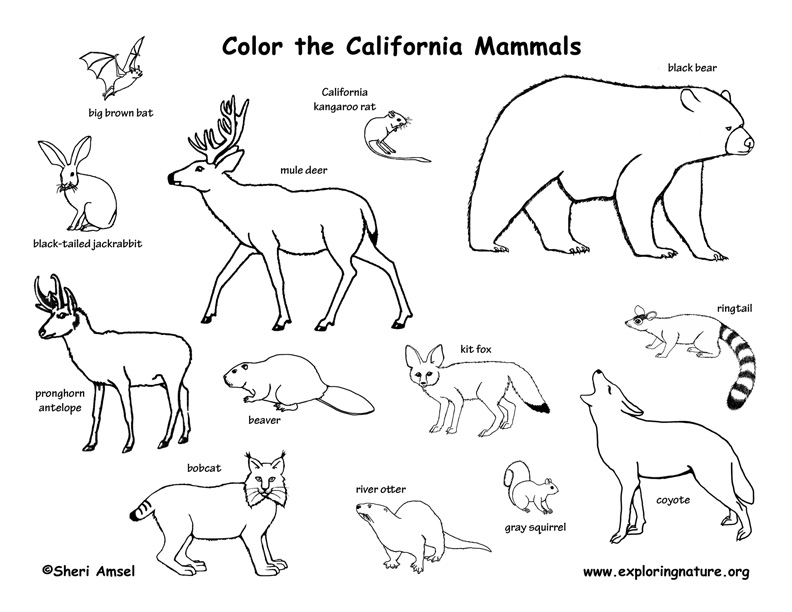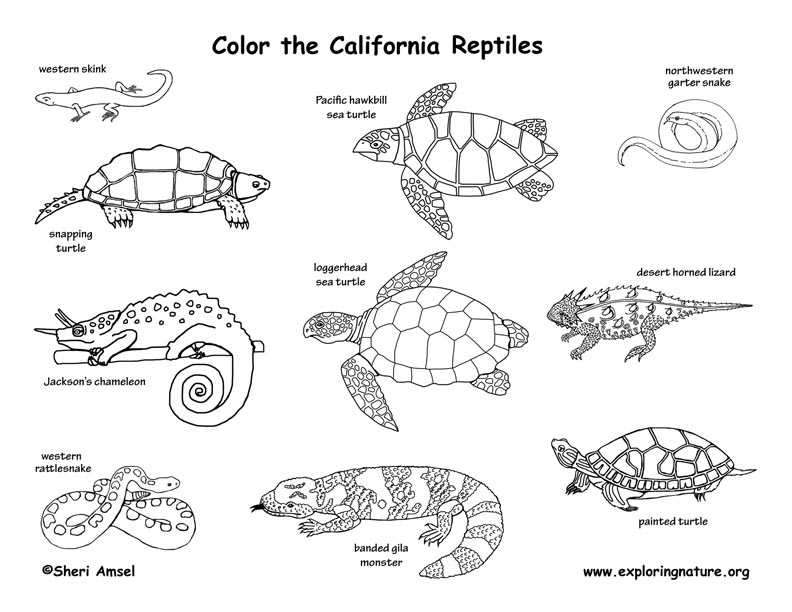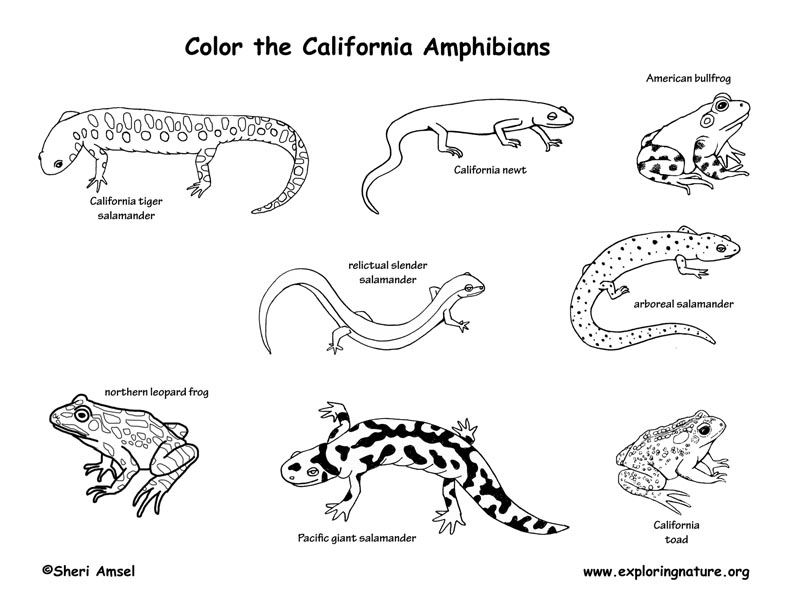

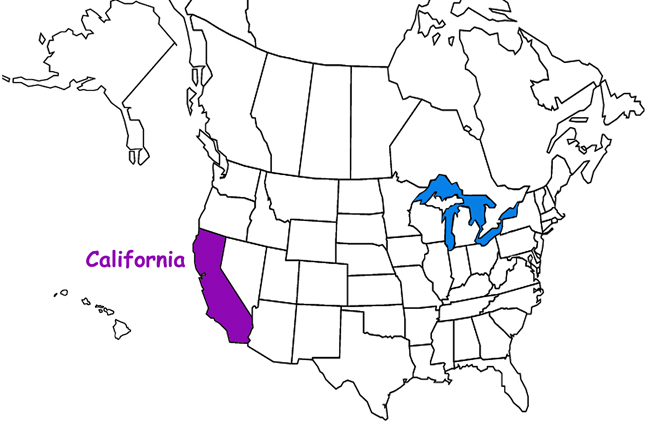
California is a large and diverse state with many habitats. Because of its size and location, California includes coastline habitats, desert, grasslands, wetlands, scrublands and forests.
On the coast there are many habitats including the tidal zones, coastal strand, and coastal salt marshes.
The tidal zones (or intertidal zones) are broken down into four areas that describe the level of the tides and water coverage - which affects the kinds of life that can survive there. This is also called the tide pool habitat. To read more about intertidal zones and the animals and plants that live there, go to: LINK
The coastal strand is the habitat just above the highest intertidal zone (the spray zone). It is a windy habitat that receives some salt spray, but does not experience any wave action (except perhaps in a storm surge).
Above the coastal strand, you find scrublands that are protected from the wind, so shrubs, like sage can take root. This habitat is referred to as coastal sage scrub.
Salt marshes are found at the mouths of rivers where they empty into the Pacific Ocean or where they enter bays. Here the tides bring salt water in to mix with freshwater marshes. Plants and animals have to be able to tolerate brackish water.
Inland, much of southern California includes dry, hot habitats and some even extends into parts of the Mojave and Sonoran Deserts. Plants and animals in these habitats must be well adapted to dry, hot conditions. In higher elevations, however, these deserts can grow quite cold at night. The wind can also contribute to both cold and drying out of the plants. Adaptations for extreme conditions is important for survival here. Plants like cacti are covered with a waxy cuticle to protect then from drying out.
California's grasslands are not like the prairies of the central states. More like scrublands, these dry, open areas may have many species of grass, shrub and wildflowers – but all are sparse in their dry habitat.
With a little more rain and ocean fog, the habitat becomes chaparral. Chaparral has a mix of shrubs and small trees. This is also sometimes called brushland as the plants tend to be "brushy" like scrub oak, sage, poison oak, and yucca.
The areas in southern California with enough rainfall do have mixed forests of maples, oaks, beech, ash and hickory.
Northern California has forests with some of the oldest and largest trees on Earth. The California redwoods are found in the coastal range fed by fog and moisture off the Pacific Ocean in summer and up to 100 inches of rain throughout the year. The thick canopy creates a temperate rain forest habitat for giant sword ferns, Pacific rhododendron, vine maple and salmonberry. It is a rich habitat for mushrooms, ferns and many species of bird, mammal and amphibian.
Land Mammals:
Sea Mammals:
For more information about California Mammals (including Latin names) click on individual animal links or for another (off-site) resource: American Society of Mammalogists
Amphibians
Reptiles
For more information about California Amphibians and Reptiles (including Latin names) click on individual animal links or for another (off-site) resource: LINK
To look up individual birds go to the Exploring Nature Birds Database.
For more information about California birds (including Latin names) click on individual animal links or for another (off-site) resource: LINK
When you research information you must cite the reference. Citing for websites is different from citing from books, magazines and periodicals. The style of citing shown here is from the MLA Style Citations (Modern Language Association).
When citing a WEBSITE the general format is as follows.
Author Last Name, First Name(s). "Title: Subtitle of Part of Web Page, if appropriate." Title: Subtitle: Section of Page if appropriate. Sponsoring/Publishing Agency, If Given. Additional significant descriptive information. Date of Electronic Publication or other Date, such as Last Updated. Day Month Year of access < URL >.
Amsel, Sheri. "California Habitats, Mammals, Birds, Amphibians, Reptiles" Exploring Nature Educational Resource ©2005-2024. December 13, 2024
< http://www.exploringnature.org/db/view/California-Habitats-Mammals-Birds-Amphibians-Reptiles >
